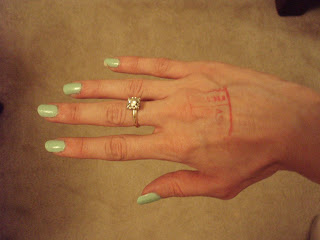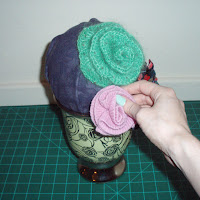If I had a million dollars I still wouldn't buy you this $1,500 (really?!)
lamp.* I will, however, show you how to make your own similar model for a substantial discount. I do like the simplicity of this lamp's lines. It lends itself to a variety of decor styles and is easily customizable.
Step-by-Step
1.) Select a simple stick lamp like
this one (which already comes with a black shade), a solid colored wrapping paper and matching spray paint.
Tip: Make sure your spray paint is rated for use on metal.
2.) Remove the shade and harp from the lamp. Spray paint the lamp base. Allow to dry
3.) Wrap the wrapping paper around the shade. Use a pencil to mark the size of the shade. Cut out the paper. Measure and trim off 1/8" from the top and bottom of the paper template.
4.) Attach the paper to the inside of the shade using double stick tape. Reassemble the lamp and shade.
Tip: When you line a lamp shade with wrapping paper, make sure you use a low wattage bulb (no higher than 40w).
*
If I had a million dollars I would buy you a monkey. Haven't you always wanted a monkey?




















































